Art Beat: 'Cultures of Seaweed' at Whaling Museum taps into our collective fascination
The New Bedford Whaling Museum has borrowed a sentence fragment from Henry David Thoreau’s “Cape Cod” as part of the name of a new exhibition in the Wattles Gallery. It is perfectly fitting and a reminder of why so many readers return again and again to the writings of the great naturalist and transcendentalist.
“A Singularly Marine & Fabulous Produce: The Cultures of Seaweed” taps into our collective fascination with seaweed. But before delving into the treasures that the NBWM has on display, let’s return to Thoreau for a moment and consider this observation:
“This kelp, oar-weed, tangle, devil’s-apron, sole-leather, or ribbon-weed, - as various species are called, - appeared to us a singularly marine and fabulous product, a fit invention for Neptune to adorn his car with, or a freak of Proteus. All that is told of the sea has a fabulous sound to an inhabitant of the land, and all its products have a certain fabulous quality, as if they belonged to another planet, from sea-weed to a sailor’s yarn, or a fish-story. In this element the animal and vegetable kingdoms meet and are strangely mingled.”
With a prelude like that, how could the NBWM not mount an exhibition on seaweed?
Curated by Naomi Slipp, the Douglas and Cynthia Crocker Endowed Chair for the Chief Curator, and Maura Coughlin of Northeastern University, the exhibition features over 125 works, including art and objects borrowed from over thirty lenders. The work, which includes paintings, prints, cyanotype photographs, collages and a variety of decorative arts, in various media, including ceramics, silver and glass, dates back from 1780 through to the contemporary.
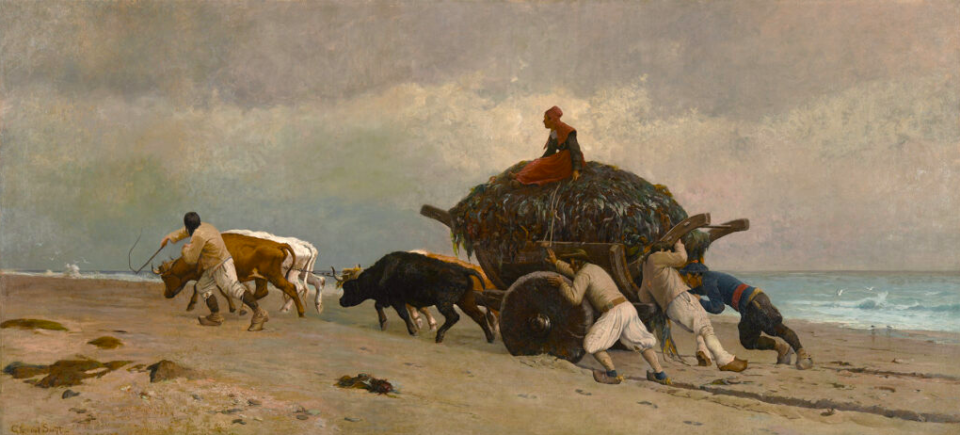
One does not need to be a phycologist to find oneself enraptured by a painting such as “Seaweed Gatherers” by Clement Nye Swift (born in Acushnet in 1846.) Painted in the French region of Brittney in 1879, it depicts the monumental labor exerted by man and beast alike as two teams of yoked oxen trudge through the sand pulling a massive pile of seaweed on a rickety cart, the men pushing from the rear, all under the threat of an angry sky.
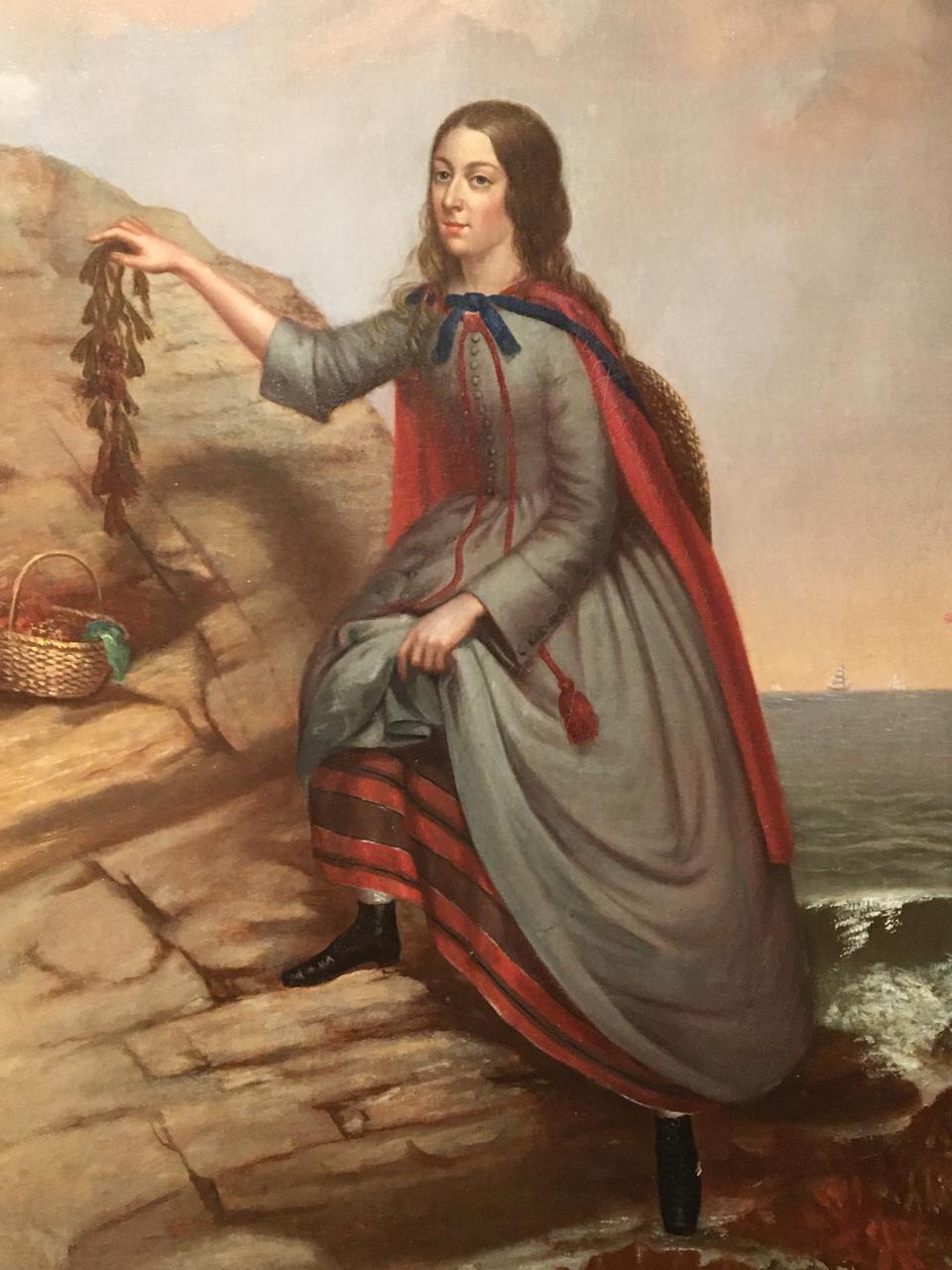
On loan from the Portland Art Museum (Maine), John Greenleaf Cloudman’s “Sea Captain’s Wife” depicts the gathering of seaweed as a much more genteel pastime, as an elegantly dressed woman in a bright scarlet shawl, draped over an ankle length gray dress, holds a short length of the weed, as if it were a garden flower. There is a small woven basket nearby in which to deposit her finds.
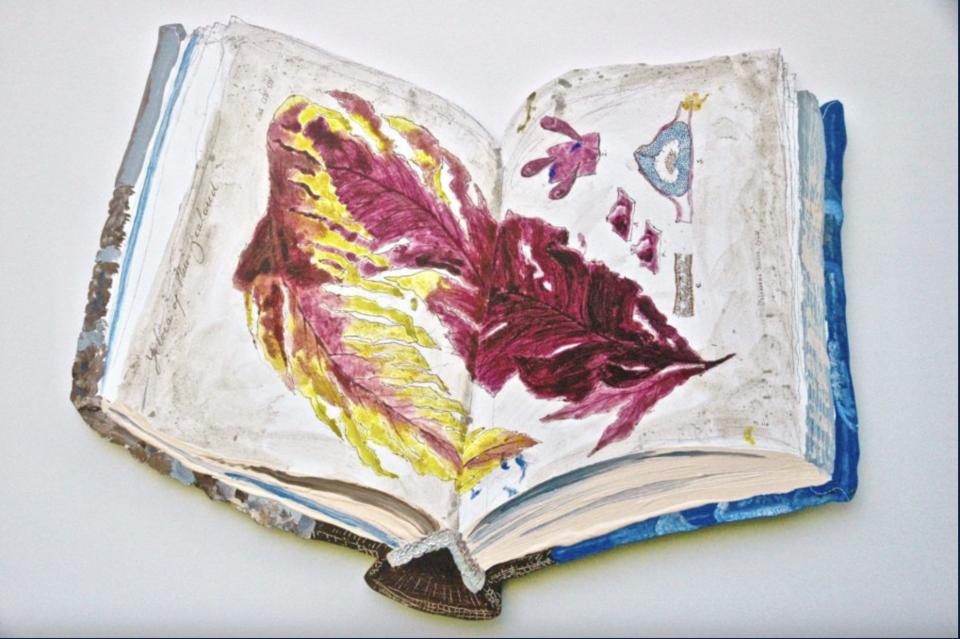
Dartmouth-based artist Roger Kizik displays “Ocean Flowers ll," an acrylic paint and ink illustration on a panel cut into the shape of an open book. Kizik has often done paintings of books that hum with a certain visceral intensity that demands attention. The illustration within the illustration — a red sea flower — is a love letter to the world of books in general and to nature guides in particular.
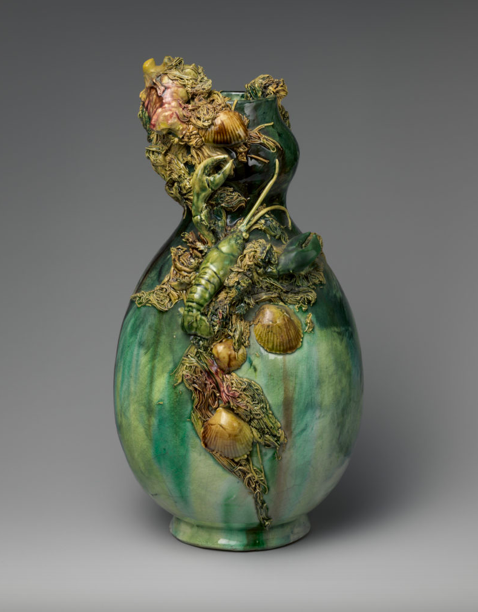
Thomas Jerome Wheatley’s “Vase with Marine Life”, from 1882, is an earthenware vessel, shimmering with a streaked aqueous green, with a lobster and scallops and clumps of the insistent seaweed on its surface, like barnacles on a hull.
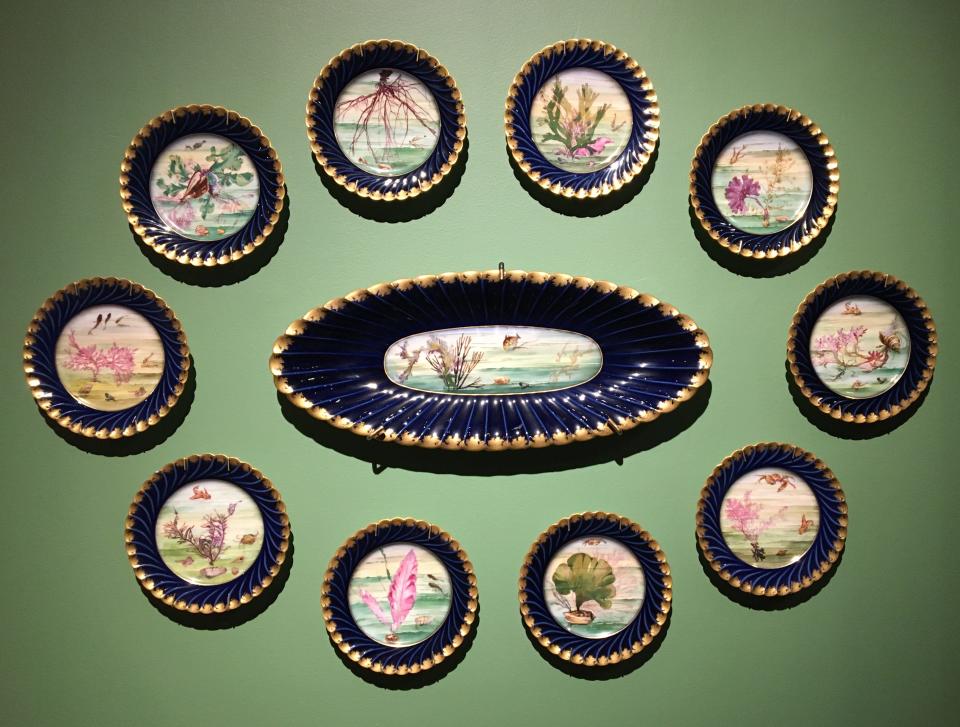
On loan from the Mystic Seaport Museum and mounted on a pea-green wall are ten ceramic hand-painted round plates and a large oval platter manufactured by Limoges, Haviland and Company in 1842. Exquisitely detailed, each piece depicts at least one kind of sea flora, while a variety of fish and crustaceans swim nearby.
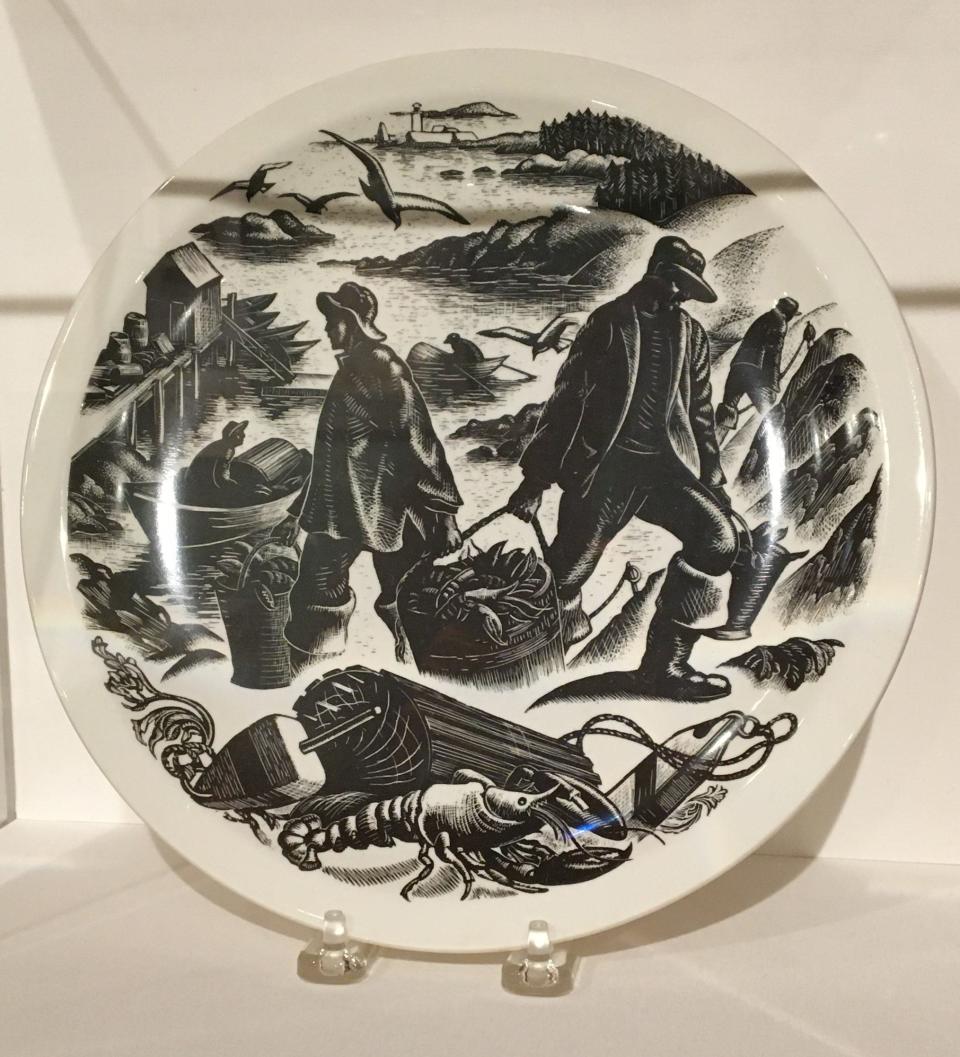
In a similar vein, Claire Leighton created “Lobstering Plate” for Josiah Wedgwood & Sons for their New England Industries Series, from 1949-1952. Manufactured with earthenware, “Queen’s ware,” yellow tinted glaze and black transfer print, it depicts lobstermen on the shore and boat, with each carrying their respective catches as seabirds dive in a flurry.
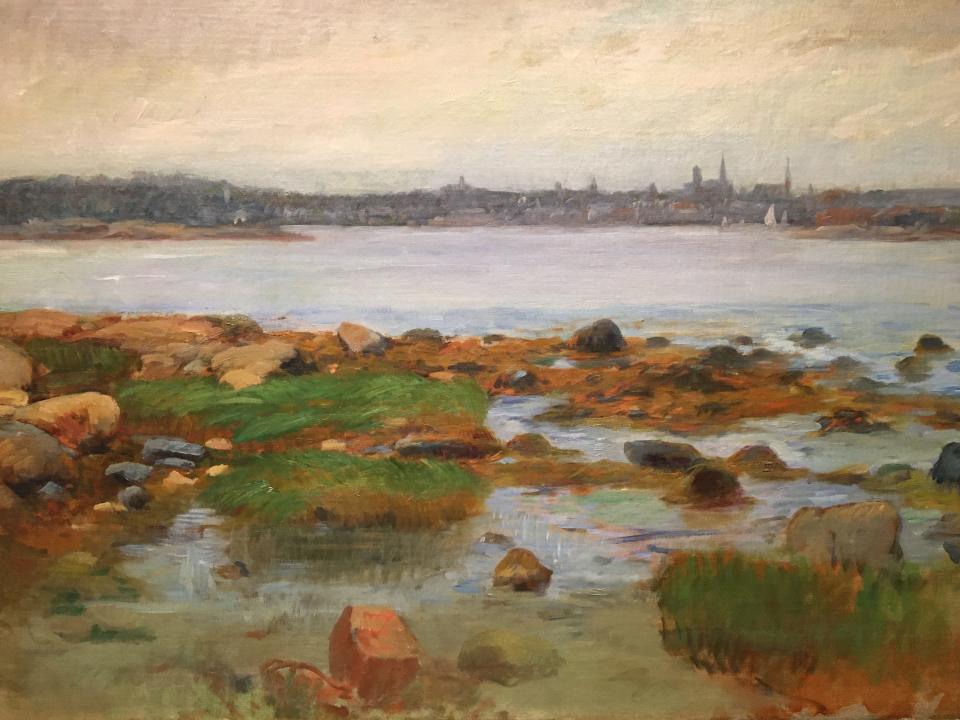
Also of particular interest: Lewis Francis Herreschoff’s printed textile work “Dolphin, Mermaid, Seaweed, and Seahorse;” Frank Duveneck’s 1905 oil painting “Horizon at Gloucester; and a sample of “Cabot’s Double Ply Quilt”, a section of eelgrass and paper insulation (circa 1929), removed from a home in New London, Connecticut.
In all, the primordial seaweed reasserts itself.
“A Singularly Marine & Fabulous Produce: The Cultures of Seaweed” is on display at the New Bedford Whaling Museum, 18 Johnny Cake Hill, New Bedford, through Dec. 3.
This article originally appeared on The Herald News: Art Beat visits 'Cultures of Seaweed' at New Bedford Whaling Museum

